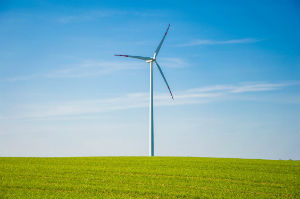Wind power could help keep us warm in depths of winter
Release Date 16 June 2017

A new study by climate scientists has shown wind turbines produce more electricity on the coldest days of winter, when demand is at its highest.
The findings, published in the journal Environmental Research Letters, are contrary to the previous belief that winter days are generally less windy and advances our understanding of the potential for wind power as a useful source of renewable energy.
The team, which involved scientists from the Met Office Hadley Centre, Imperial College London and the University of Reading, compared wind power availability with electricity demand in winter, and found turbines often produced more power on the coldest days compared to the winter average.
Hazel Thornton, of the Met Office Hadley Centre, is one of the paper’s authors. She said: “During winter in the UK, warmer periods are often windier, while colder periods are more calm, due to the prevailing weather patterns. Consequently we find that in winter as temperatures fall, and electricity demand increases, average wind energy supply reduces.
“However, contrary to what is often believed, when it comes to the very coldest days, with highest electricity demand, wind energy supply starts to recover”. The team found that during the highest 5% of energy demand days, one third produce more wind power than the winter average.
Hazel added: “The very coldest days are associated with a mix of different weather patterns, some of which produce high winds in parts of the UK. For example, very high pressure over Scandinavia and lower pressure over Southern Europe, blows cold continental air from the east over the UK, giving high demand, but also high wind power. In contrast, winds blowing from the north, such as happened during December 2010, typically give very high demand but lower wind power supply.”
“A wind power system distributed around the UK is not as sensitive to still cold winter days as often imagined." - Professor sir Brian Hoskins, University of Reading and Imperial College London's Grantham Institute
The research suggests that a spread of turbines across Great Britain would make the most of the varied wind patterns associated with the coldest days – maximising power supply during high demand conditions. Results also suggest that during high demand periods offshore wind power provides a more secure supply compared to onshore, as offshore wind is sustained at higher levels.
Professor Sir Brian Hoskins, of the University of Reading and Chair of Imperial College London’s Grantham Institute – Climate Change and the Environment, is one of the paper’s other authors. He said: “A wind power system distributed around the UK is not as sensitive to still cold winter days as often imagined. The average drop in generation is only a third and it even picks up for the days with the very highest electricity demand.”
Finally the study highlights the risk of concurrent wide-scale high electricity demand and low wind power supply over many parts of Europe. Neighbouring countries may therefore struggle to provide additional capacity to the UK, when the UK’s own demand is high and wind power low.
The research – published in the journal Environmental Research Letters – included contributions from Imperial College London, and the Department of Meteorology at the University of Reading.